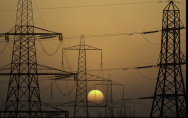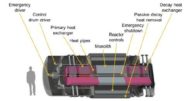
Progress on Disclosure only Success of COP27
As President Biden prepares to address Cop27, it is already clear that “the world’s last chance to conquer climate change” will end in failure.Newsflash: 1.5 degrees is dead and buried.
None of the largest emitters are sticking to pledges made at earlier meetings. China, Russia and India have not even sent their leaders. No wonder campaigner Greta Thunberg is boycotting COP27 – dismissing it as “Greenwash.”
Among an increasing clamour for advanced western economies countries to pay “reparations,” some of the world’s worst carbon emitters (China, Brazil) are hiding behind a smokescreen of historical confusion. At least 20 per cent of historical carbon emissions took place before the industrialisation of the advanced economics since 1850. China has been burning coal for millenia. It had a booming iron and coal industry through the Tang and Song dynasties. In the 11th Century it was burning several hundred thousand tonnes of coal annually. And if you include deforestation as well as fossil fuel in the calculations, Malaysian and Argentina are as much to blame as UK – or China, which is currently the world’s largest emitter and set to increase.
Meanwhile the world’s energy companies are using Cop as a set of useful idiots to push through their plans to receive over $100 TRILLION for decarbonising the world’s energy grids – i.e. paying them to clean up the mess they created in the first place. It would be the most spectacular example of greenwashing in history.
But one little-noticed factor does justify the whole COP process and stop me at least from dismissing it as a complete waste of time. The giant global project to quantify our emissions is gathering pace.
The EU is finalising disclosure rules for 50,000 companies in the 27-country bloc to report on environmental, social and governance (ESG) factors, as well as a company’s impact on the environment, known as double materiality. (https://www.reuters.com/business/cop/cop27-sustainable-standard-setters-close-regulatory-gap-2022-11-10/).
This initiative is a vital building block, and our last best chance to at least reduce the level of damage. Even though its too late to save 1.5, it is better than nothing.















